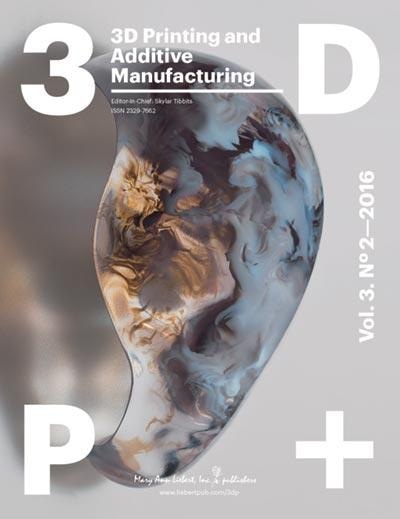Aug 30 2016
A new study describes the development of a novel hybrid polymer suitable for producing 3D-printed scaffolds on which living cells can be seeded to create engineered tissues. The ability to use these hybrid polymer spools with easy-to-operate, commercial 3D printers is demonstrated in the study published in 3D Printing and Additive Manufacturing, a peer-reviewed journal from Mary Ann Liebert, Inc., publishers. The article is available free on the 3D Printing and Additive Manufacturing website until September 22, 2016.
 3D Printing and Additive Manufacturing is the only peer-reviewed journal focused on the rapidly moving field of 3D printing and related technologies. Led by Editor-in-Chief Skylar Tibbits Director, Self-Assembly Lab, MIT, and Founder & Principal, SJET LLC., the Journal explores emerging challenges and opportunities ranging from new developments of processes and materials, to new simulation and design tools, and informative applications and case studies. Published quarterly online with open access options and in print, the Journal spans a broad array of disciplines to address the challenges and discover new breakthroughs and trends within this groundbreaking technology. Tables of content and a sample issue may be viewed on the 3D Printing and Additive Manufacturing website. (CREDIT: ©Mary Ann Liebert, Inc., publishers)
3D Printing and Additive Manufacturing is the only peer-reviewed journal focused on the rapidly moving field of 3D printing and related technologies. Led by Editor-in-Chief Skylar Tibbits Director, Self-Assembly Lab, MIT, and Founder & Principal, SJET LLC., the Journal explores emerging challenges and opportunities ranging from new developments of processes and materials, to new simulation and design tools, and informative applications and case studies. Published quarterly online with open access options and in print, the Journal spans a broad array of disciplines to address the challenges and discover new breakthroughs and trends within this groundbreaking technology. Tables of content and a sample issue may be viewed on the 3D Printing and Additive Manufacturing website. (CREDIT: ©Mary Ann Liebert, Inc., publishers)
Lucas Albrecht, Stephen Sawyer, and Pranav Soman, Syracuse University, NY, present the methods used to produce polycaprolactone-based polymers and to fabricate scaffolds using a Makerbot 3D Fused Deposition Modelling printer. In the article "Developing 3D Scaffolds in the Field of Tissue Engineering to Treat Complex Bone Defects", the researchers report how they overcame the challenges associated with creating composite polymer spools. The authors incorporated living cells mixed with gelatin hydrogels into the scaffolds and achieved high levels of cell survival. They discuss potential applications of these techniques, including tissue engineering to repair complex bone defects.
"The authors developed hybrid spools using the FDA-approved PCL polymer as the base material and mixing in poly-l-lactic acid or hydroxyapatite particles, and demonstrated the compatibility of these hybrid polymer spools with a readily accessible, commercial 3D printer to fabricate scaffolds capable of supporting the growth of live cells," says Editor-in-Chief Skylar Tibbits, Director, Self-Assembly Lab, MIT, and Founder & Principal, SJET LLC.